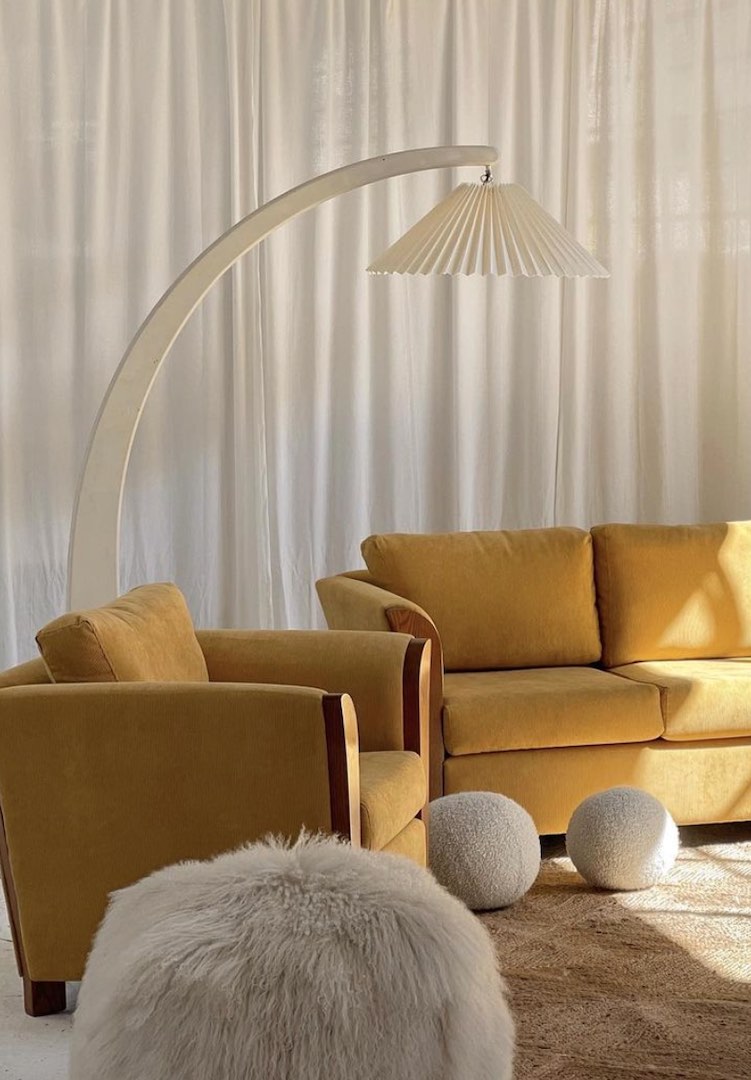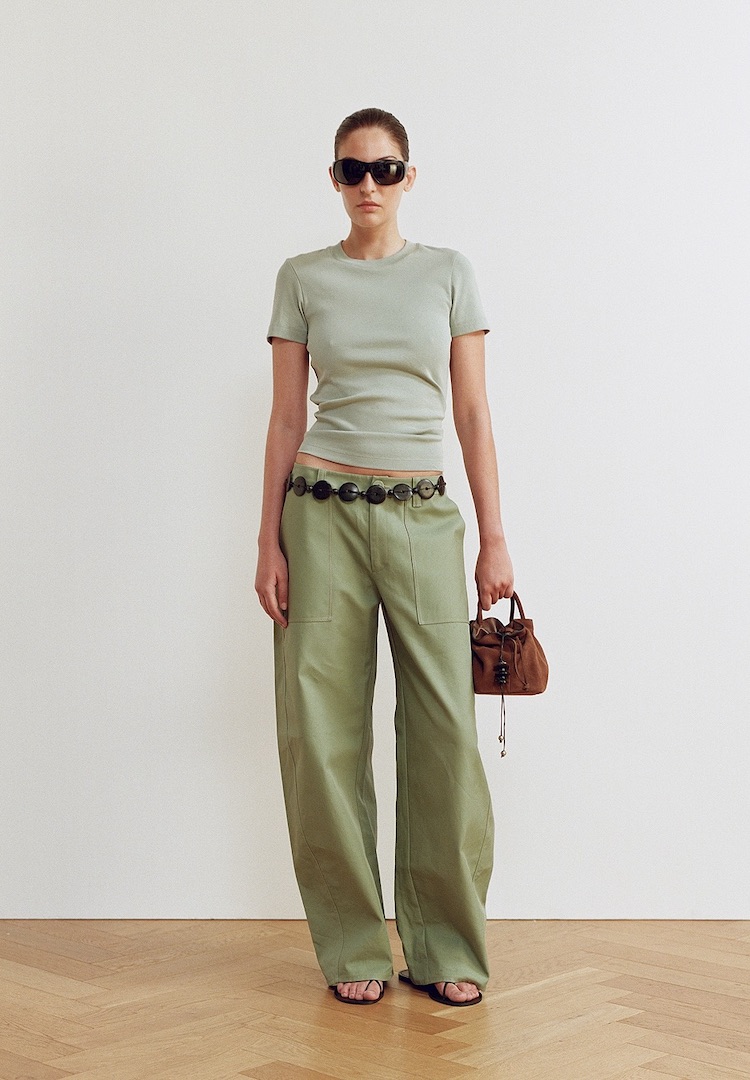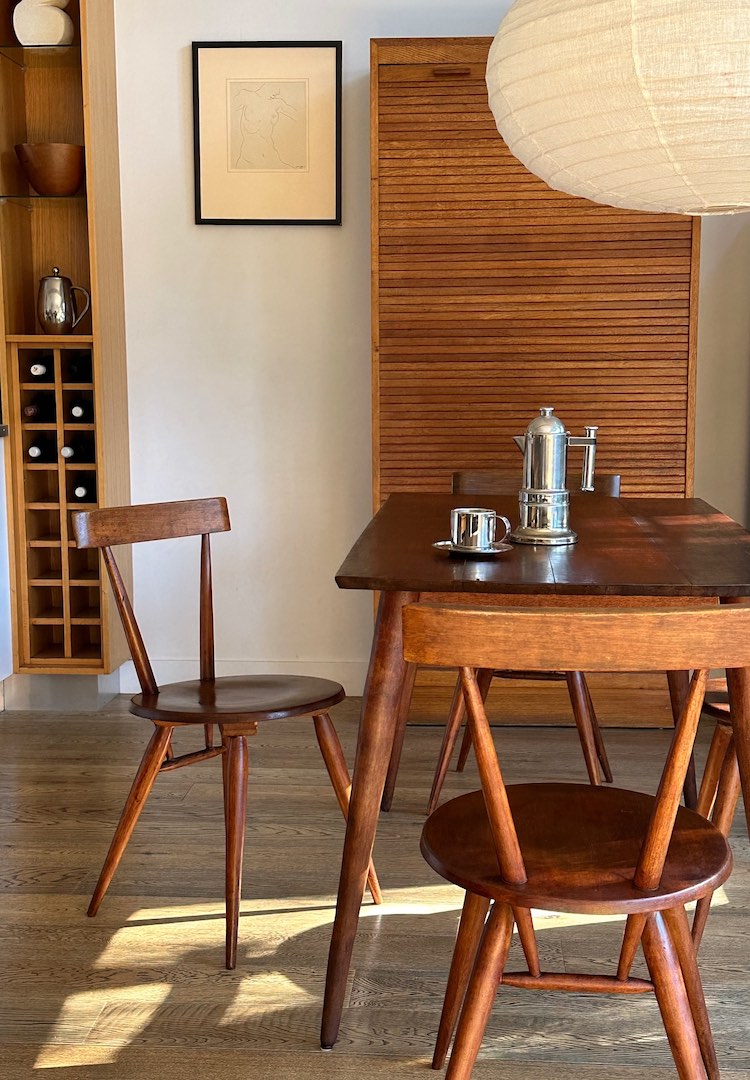A vintage furniture curator on eco-friendly ways to upgrade your home
IN PARTNERSHIP WITH CARPET COURT
IMAGE VIA @CURATED_SPACES/INSTAGRAM
WORDS BY ELEANOR WILSON
Making recycling look brand-new.
When it comes to spending money on material items, I’ll be the first to admit I often find myself in a battle between the Savers-loving sustainable shopper in me, and the temptation of shiny, new fast-fashion goods that leave me with an enduring sense of consumer guilt.
Luckily, as more pressure is put on businesses to produce ethically and sustainably, I’m finding it easier to catch the sweet spot between my conscious and consumerist urges. But, in my fashion-obsessed brain, I’ll admit I rarely take the time to consider how I could implement sustainability into other areas of my everyday life – like the home.
Want to discover how to make your home eco-friendly? Head to our Life vertical.
In spite of my Gen Z ignorance, sustainability in home interiors is growing, and there’s no better example of this eco-innovation than Carpet Court’s exclusive range of econyl regenerated nylon carpet. Who knew sustainability had become so accessible?
Keen to open Pandora’s (thrifted) box of all things sustainable for the home, I enlisted the help of Pip Newell, the founder and creative director of vintage furniture marketplace Curated Spaces, to enlighten me on the best ways to turn your house into an eco-friendly home.
How can I give my home an eco-friendly upgrade?
Curated Spaces itself is filled with sustainable local furniture makers, as well as secondhand furniture goods, so it’s safe to assume Pip has a few tricks up her sleeve when it comes to making sustainable changes to the home.
If you’re looking to revamp your space, she says shopping vintage, and refurbishing old furniture with DIY projects are a sustainable and affordable option. “There are so many great ways to also make Christmas presents from second hand/vintage items. You can shop at op shops and upcycle chairs, tables or even vases.”

Getting your hands dirty, and your creative juices flowing, can also prove helpful when in pursuit of eco-friendly living. “You could also learn how to sew (this is high on my list of to-dos) and recover some dining chairs, or make some new cushion covers. I have been playing around with painting lately and it is such a fun way to add some extra colour to a room,” she adds.
She says supporting local businesses can also boost the slow furniture trade. “The carbon footprint from shipping furniture internationally is horrific and one of the main contributing factors to waste and expenditure of emissions. When you shop locally, everything is made-to-order, so there is no waste, which also reduces unnecessary expenditures and emissions.”
What if I can’t find what I want secondhand?
It’s no secret that sourcing and curating secondhand items to fit your personal style can be quite time consuming, and from my experience involves many a train ride home, empty-handed and emotionally drained.
So if you enjoy the convenience of shopping for brand new items, but want to remain environmentally conscious, Pip recommends buying items made from quality materials that will stand the test of time, such as aluminium and recycled plastics.
“Aluminium is a material that is great as it is strong and robust and will last a lifetime. It is also a material that does not deteriorate over time and it can be recycled. We sell a range of furniture from two brothers Jack and Mark Fearon made from aluminium. They design and make their items themselves in Burleigh Heads and have them powder coated only a few hundred meters away down the road.”
Thanks to the introduction of sustainable practices, circular materials can not only be used to furnish your home, but they are also becoming part of the framework – almost literally. Carpet Court has recently implemented a range of carpet using econyl regenerated nylon, giving the consumer the ability to commit to a sustainable ethos in all areas of their life.
Econyl regenerated nylon is made from 100 per cent recycled yarn recovered from waste products such as fishing nets, fabric scraps, and carpets destined for landfill. The material comes in a range of colours, textures and styles, and is also stain and fade resistant, durable and affordable.
So what could an entirely sustainable bedroom space look like? With an econyl carpet as a base, Pip suggests experimenting with an aluminium bed frame, eco-friendly linen curtains, some vintage or secondhand lamps, and a recycled plastic bedside table.
While it may seem somewhat futuristic to witness circular design entering even the carpet and flooring market, Pip says it’s imperative that businesses follow Carpet Court’s lead, and adopt more sustainable methods and processes.
“It is the way forward and I like to think it is what people want to see and will demand to see more and more companies doing better,” she tells me.
“I also think it is important for people to buy responsibly. If people stop buying from fast furniture companies then they will be forced to change their ways.”
To shop Carpet Court’s range of eco-friendly carpets, head here.













